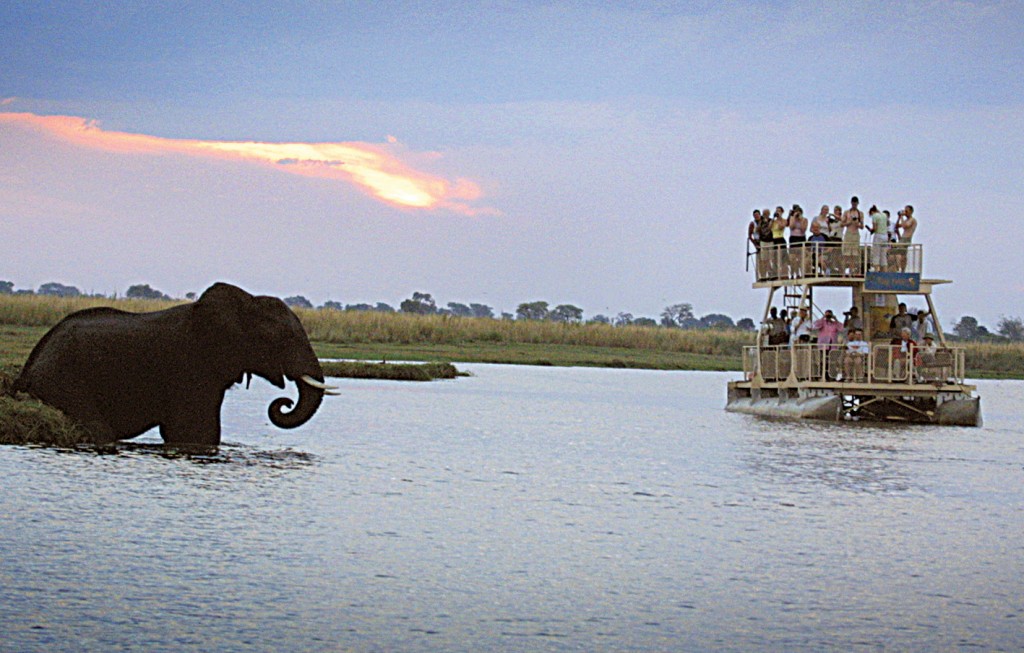Wildlife Viewing Rules and Ethical Guidelines in Uganda’s National Parks | Responsible Safari Conduct | What are the wildlife viewing rules and ethical guidelines in Uganda parks?
The heart of Uganda’s wilderness beats with a rhythm both ancient and untamed. Here, where mountain gorillas tread silently through the misty forests of Bwindi, where elephants roam across golden plains, and where lions perch majestically on fig trees in Ishasha, the thrill of wildlife viewing becomes an almost spiritual experience. Yet behind every magical sighting lies a responsibility — to protect, to respect, and to preserve.
Uganda’s national parks and wildlife reserves are sanctuaries, not showgrounds. The animals within them are not actors performing for human applause, but wild beings living according to their own natural laws. To witness them is a privilege, one that carries ethical weight and moral depth. That is why wildlife viewing rules and ethical guidelines exist: to ensure that human presence enhances conservation rather than endangering it, and that every encounter nurtures understanding instead of intrusion.
For travelers embarking on safaris across Uganda, knowing and following these guidelines is not only about compliance — it is an act of respect. It transforms tourism into stewardship and ensures that the stories told by Uganda’s landscapes remain as wild and beautiful for generations to come.
The Foundation of Wildlife Ethics in Uganda
Uganda’s wildlife conservation framework is built on decades of protection and education. The Uganda Wildlife Authority (UWA), which manages the country’s parks and reserves, enforces a detailed code of conduct for both visitors and tour operators. These principles reflect a philosophy where tourism and conservation coexist in balance.
At its heart lies the recognition that Uganda’s animals are free. They are not pets, nor props, nor possessions — and human behavior must adapt to their natural rhythm, not the other way around. The rules of wildlife viewing are therefore designed not to restrict enjoyment but to sustain it. They maintain safety, minimize stress for animals, prevent habitat disturbance, and ensure that tourism revenue directly contributes to conservation.
Wildlife ethics in Uganda go beyond legal regulation; they express cultural respect. Many local communities living near the parks view wildlife as part of their heritage, woven into ancestral stories and traditional values. To act responsibly as a visitor is to honor this heritage.
The Principle of Minimal Disturbance
One of the fundamental tenets of ethical wildlife viewing in Uganda is non-disturbance. Every visitor must remember that they are entering the animals’ home — a realm governed by instinct and survival. Disturbing this balance, even unintentionally, can have profound consequences.
For example, approaching animals too closely can cause stress, disrupt feeding or breeding behavior, and even provoke defensive aggression. The Uganda Wildlife Authority enforces specific viewing distances depending on the species — such as maintaining at least seven meters from gorillas or chimpanzees — but the principle extends to all wildlife. Observing quietly from a respectful distance allows animals to remain relaxed and behave naturally.
Noise is another form of disturbance. Loud conversations, engine revving, or camera shutters can startle wildlife and scatter them into hiding. Silence, on the other hand, becomes a form of respect. The true magic of a Ugandan safari unfolds when one listens: the low rumble of elephants communicating across the plains, the chirping of tree frogs after dusk, the rustle of a leopard slipping through tall grass. Ethical travelers learn that the quieter they are, the more nature reveals.
Vehicle Etiquette During Game Drives
In Uganda’s savannah parks such as Queen Elizabeth, Murchison Falls, and Kidepo Valley, wildlife viewing often takes place from safari vehicles. The way these vehicles move and behave plays a crucial role in protecting both animals and the environment.
Drivers are required to stay on designated tracks, a rule that safeguards fragile vegetation and prevents soil erosion. Off-road driving may seem harmless, but it damages grasslands, compacts soil, and destroys nesting sites of ground birds like lapwings or courser species. Over time, these impacts alter entire ecosystems.
The speed limit within parks, generally around 40 km/h, is designed not just for safety but for harmony. Driving too fast raises dust, disrupts animal movements, and risks collisions with crossing wildlife. Patience is not merely a virtue on safari — it is a necessity. The slower the pace, the richer the experience, for true sightings often come to those who wait.
Vehicles should also limit engine idling near animal groups. The fumes, noise, and vibrations may cause discomfort, especially to sensitive species like elephants or antelope. Ethical guides turn off engines at sightings, allowing travelers to absorb the moment in serenity.
The Silent Language of Respect: Behavior Around Wildlife
In Uganda’s wild places, body language matters as much as words. Animals interpret human gestures instinctively, and even small movements can change an encounter’s outcome. For example, standing abruptly, waving hands, or pointing can alarm animals and cause them to flee. The correct approach is stillness — a composed posture that communicates peace rather than threat.
Feeding animals is strictly prohibited. What may seem like an act of kindness can lead to dependency, disease transmission, and aggression. When animals associate humans with food, they lose their natural fear and may become dangerous or vulnerable to poaching. Feeding bans apply everywhere — from monkeys in Kibale to birds around lodges — preserving the integrity of wildlife behavior.
Eye contact can also carry meaning. In primates, especially gorillas and chimpanzees, prolonged staring may be interpreted as dominance or challenge. Guides instruct trekkers to keep their gaze gentle and avoid direct eye contact during close encounters. This subtle awareness maintains calm interactions and mutual respect.
In every park, guides remind travelers of a simple truth: observation without interference is the essence of ethical safari. The goal is not to capture dominance over nature but to witness its freedom.
Photography with Purpose and Care
Uganda’s wildlife photography opportunities are extraordinary. From the golden savannah light of Murchison to the mist-shrouded forests of Bwindi, every moment begs to be captured. Yet photography must be guided by ethics just as much as admiration.
Flash photography is strictly banned during gorilla and chimpanzee trekking. Bright flashes disorient primates, disturb their vision, and may cause anxiety. Even outside forests, the use of flash or bright lights at night can interfere with nocturnal species’ behavior. Responsible photographers rely on natural light or appropriate low-impact equipment to preserve the authenticity of the moment.
Patience replaces pursuit. Chasing animals for better angles or blocking their path for a photograph is both unethical and dangerous. The best wildlife photographs in Uganda emerge from quiet observation, where timing, respect, and understanding replace intrusion.
Furthermore, sharing wildlife photographs carries its own responsibility. Geotagging rare animal locations can unintentionally aid poachers or disrupt sensitive species. Ethical photographers choose to celebrate wildlife without endangering it — ensuring that admiration never leads to exploitation.
Gorilla and Chimpanzee Trekking Rules – Guardians of the Great Apes
Few experiences compare to standing a few meters from a mountain gorilla in the misty forest of Bwindi or watching a chimpanzee in Kibale crack nuts with astonishing intelligence. These encounters are life-changing, but they demand the highest ethical standards.
Great apes share over 95% of their DNA with humans, making them susceptible to many of our diseases. To protect them, strict health and safety regulations govern trekking. Visitors with colds, flu, or any communicable illness are not permitted to participate, and a minimum distance of seven meters must be maintained at all times. This rule is not symbolic — it prevents potential transmission of pathogens that could devastate ape populations.
Group sizes are limited, typically to eight people per gorilla family visit, and interaction time is restricted to one hour. These controls ensure that the apes’ natural routines are not disrupted. The use of masks, introduced during and after the COVID-19 pandemic, further enhances protection and has become a best practice across Uganda’s primate parks.
Physical contact is strictly forbidden. While young gorillas may occasionally approach out of curiosity, visitors must remain still and avoid touching them. Guides act as mediators, ensuring every encounter unfolds safely for both species.
This discipline transforms gorilla trekking from mere adventure into a model of ethical wildlife interaction — one where empathy replaces curiosity and conservation replaces consumption.
 Waste Management and Environmental Integrity
Waste Management and Environmental Integrity
Respecting wildlife also means respecting their environment. Every bottle, wrapper, or discarded item left behind in a park becomes a silent threat. Uganda’s national parks enforce a strict “leave no trace” policy, where visitors are expected to carry all waste back out.
Plastic pollution poses a growing challenge across Africa, and Uganda has taken proactive measures by banning single-use plastic bags. Travelers are encouraged to pack reusable water bottles, biodegradable toiletries, and eco-friendly packaging to minimize their footprint.
Littering is not only unethical but illegal, punishable by fines and possible removal from the park. Even biodegradable waste like fruit peels can disrupt local ecosystems or attract animals to human areas. Ethical travel demands mindfulness in every action — from packing light to disposing responsibly.
In the quiet wilderness, sustainability becomes a daily practice, not a slogan.
The Role of Guides and Rangers
In every Ugandan park, guides and rangers are the custodians of both safety and ethics. Their knowledge extends beyond wildlife behavior to ecological balance, cultural respect, and visitor education. Following their instructions is not optional; it is the foundation of responsible safari conduct.
Guides ensure that viewing distances are respected, routes are followed, and interactions remain controlled. They interpret the land — reading subtle signs like animal tracks or alarm calls — that reveal the deeper narrative of the ecosystem.
Engaging with rangers respectfully honors the human dimension of conservation. Many come from nearby communities and view their work as both livelihood and legacy. By listening to their stories, travelers contribute to a cycle of empowerment that strengthens the connection between tourism and local stewardship.
In Uganda, ethical wildlife viewing is not an individual pursuit but a collective partnership between visitors, guides, and the environment itself.
Cultural Sensitivity and Community Involvement
Wildlife ethics extend beyond animals to include people. Many of Uganda’s parks border communities whose livelihoods intertwine with conservation. Understanding and respecting their traditions is essential to ethical travel.
Supporting community-based tourism — such as visiting craft markets, cultural villages, or local guides — helps channel tourism revenue back into conservation efforts. It discourages poaching by offering alternative incomes and fosters a sense of shared responsibility for wildlife protection.
Visitors should seek permission before photographing locals, particularly in rural or traditional areas. Respectful curiosity fosters mutual appreciation, while intrusion breeds misunderstanding.
In Uganda, wildlife thrives not in isolation but in coexistence — a balance nurtured by both nature and humanity.
Safety and Conservation Laws
Beyond ethics, Uganda enforces clear legal frameworks to protect wildlife. Activities such as poaching, feeding animals, littering, or damaging vegetation are punishable under the Uganda Wildlife Act. Rangers patrol the parks continuously, ensuring compliance and responding to emergencies.
For visitors, these regulations are not obstacles but assurances — they guarantee that the landscapes they traverse remain wild, secure, and thriving. Observing them transforms tourists into guardians, each one contributing to the broader mission of preservation.
Ethical behavior becomes contagious. When travelers model respect, they inspire others — including local youths, guides, and fellow adventurers — to value conservation not as duty, but as identity.
The Spirit of Responsible Tourism
Ultimately, ethical wildlife viewing in Uganda transcends rules; it becomes a mindset. It is about seeing beyond the lens of possession and into the heart of coexistence. Each footprint on a trail, each photograph taken, each moment shared carries consequences. When approached with humility and awareness, tourism becomes a force for good — a bridge between wonder and responsibility.
Uganda’s wildlife is not an exhibition to consume but a symphony to experience. The gorilla’s gaze, the elephant’s rumble, the bird’s song — all are voices in a timeless conversation. Listening with respect ensures that the story continues, not just for us but for the generations that follow.
For those ready to explore Uganda’s national parks with integrity, expertise, and guided care, it is recommended to book your Africa tours and safaris with WildHorn Africa. Their deep commitment to sustainable tourism, experienced guides, and community-driven approach guarantee that every encounter honors both nature and culture.
Because in Uganda, the truest adventure lies not in what you see — but in how gently you walk upon the land that allows you to see it.





 WildHorn Africa – Authentic and unforgettable tours across Africa, guided by local experts who know the land, wildlife, and culture best.
WildHorn Africa – Authentic and unforgettable tours across Africa, guided by local experts who know the land, wildlife, and culture best.


